For this project we had to make a fully functional laser gun to use in epic battles with aliens……..
Just kidding
This project is about using the Pythagorean theorem and the laws of reflection to create a laser triangle.
“LASERS?!? Aren’t those dangerous?”
We aren’t using those types of lasers you see in movies that can cut through metal and slice off fingers. The lasers that we use are just rays of coloured light. Just like those laser cat toys:
Building knowledge
Atthe start of this project I had no idea what the Pythagorean theorem or law of reflection was. So obviously we had to do lots of building knowledge. We were out into our project groups to come up with all the questions we had for this project. 
We then started a project start mind map just to gather all the information that we already knew. Here is a comparison of my mind map at the begging and end of the project.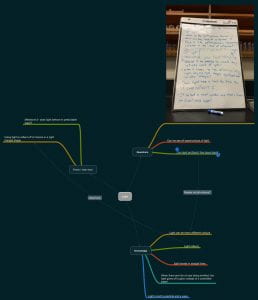
We also did a really cool lab to learn about frequency and amplitude in waves.
Now what is the law of reflection? The law of reflection is the fact that the angle of incidence and the angle of reflection will always be the same distance from the normal. As you can see in the diagram below, the normal is an imaginary line that is perpendicular to the reflective surface. We did lots of practise measuring the angle of incidence and reflection with accuracy so that our final project could be precise.
We also had to learn about using the Pythagorean theorem. Pythagorean theorem is used to measure the side lengths of right angle triangles. The formula is A ² + B ² = C ² or Leg ² + leg ² = hypotenuse ². The Pythagorean theorem also states that the area of the square formed by the longest side of the right triangle (the hypotenuse) is equal to the sum of the area of the squares formed by the other two sides of the right triangle, the hypothetical squares look like this;
Our final laser triangle- milestone 5
The end goal of this project was milestone 5, where each group had to create an accurately planned laser model that included at least 1 right triangle. My group didn’t have a lot of ideas for what we wanted ours to look like but we decided that we would try to create the laser off the ground by elevating everything with stands and clamps. The whole point of the model was that it was supposed to be able to be measured accurately, especially the angle of incidence and angle of reflection. We ran into a big problem when every time we tried to set it up something had shifted or changed in height. With only two days left until the project was due we decided to scrap all that we had worked on and remake the triangle on the table like everyone else. We were able to measure more accurately and it was much easier to mark the position of the mirrors and laser. On the final day I brought in my glue gun and some glitter because we basically just had the project sitting on a white piece of cardboard that had marks all over it. What I’m trying to say is that even though our project was fully functional it looked….. bland. But there is almost nothing that glitter cant fix so with a little bit of white paint and pure creativity our project started to look pretty good. Here are some photos of what we made + a short write up;
Core competencies
- Questioning and predicting: How can I demonstrate a sustained intellectual curiosity about a scientific topic or problem of personal interest? The milestones that correspond with this competency are; Milestone1- project start mind map, milestone 3- law of reflection group lab, milestone 4- lazer design lab individual, milestone 5- final laser model. This competency is about using your class time efficiently to do your work without distractions. This competency might not seem hard but definitely is something that I know I can do better on. In the final days of making the physical model my group had to scrap our original idea and start from scratch. It was really hard to stay focused on the project when it seemed like a sinking ship. We ended up pulling ourselves together and I am very proud of the final stage of our laser model.
- Communicating and representing: how can I represent mathematical ideas in concrete, pictorial, and symbolic forms? The milestones that support this competency are; Milestone 2- Pythagorean khan academy quiz and milestone 6- the blog post. This competency is about being able to develop a scientific procedure that is accurate and includes all required steps of a scientific method. Even though the project outline only links two milestones to this competency I would actually like to add more. I think that I used this competency in milestones 3, 4, and 5, when I had to write up about the experiments. Overall I think that I improved the most on this competency compared to the other two because I got more comfortable and confident the more I worked on this competency.
- Applying and innovating: how can I co-operativly design projects? This competency is used in; Milestone -4 individual lazer design, milestone 5- final laser model, and milestone 6- the blog post. This competency is about having an accurately planned, labeled, built, and measured laser triangle. This competency also talks about all group members contributing equally. Yet again I would also like to add milestone 3, the law of reflection group experiment, to this competency because that was a group project that corresponded with the values of this competency.
Now its time for my goodbye statement.
This project was really fun and I obviously couldn’t have done it without my group. Big thanks to Claire, Ariane, and Theryn.
As Always, Brooke.

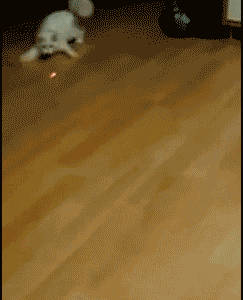


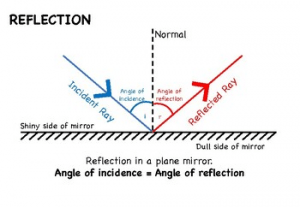
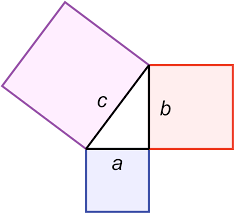
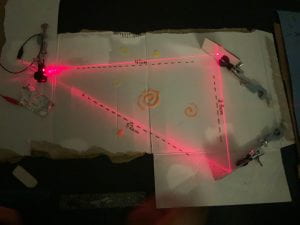

PFFFFT- I love your blog post title and introduction. It really engaged me at the beginning. 🙂